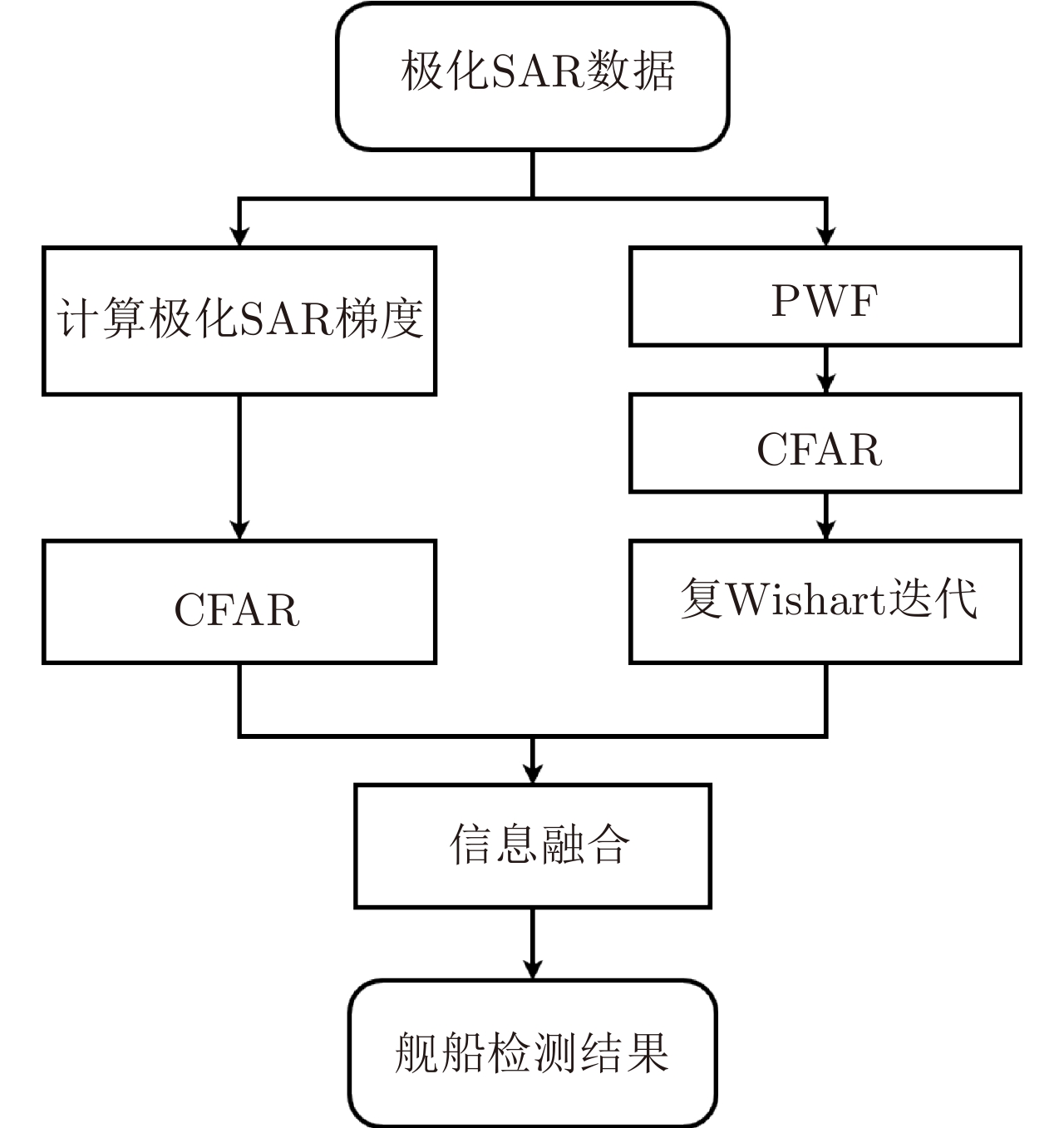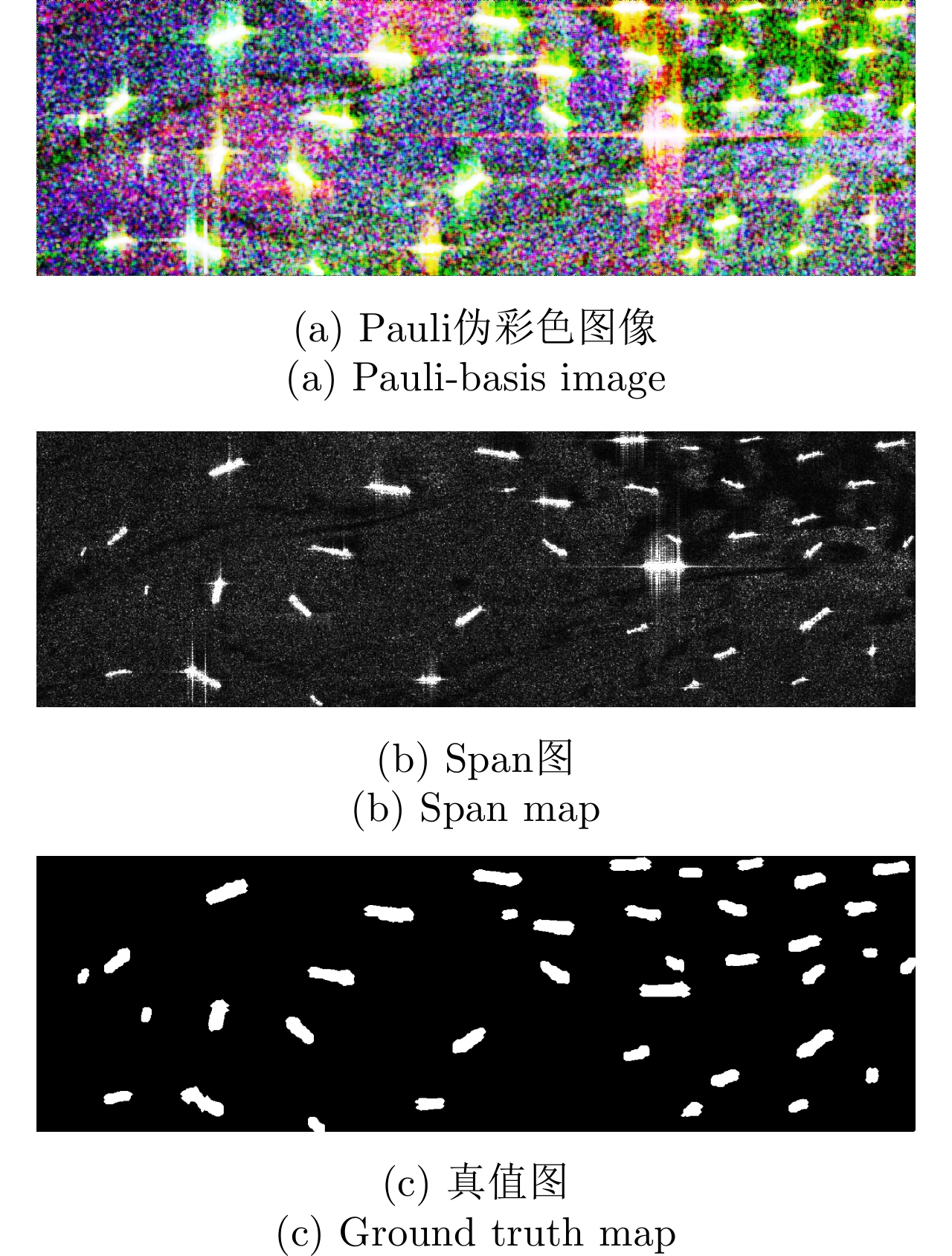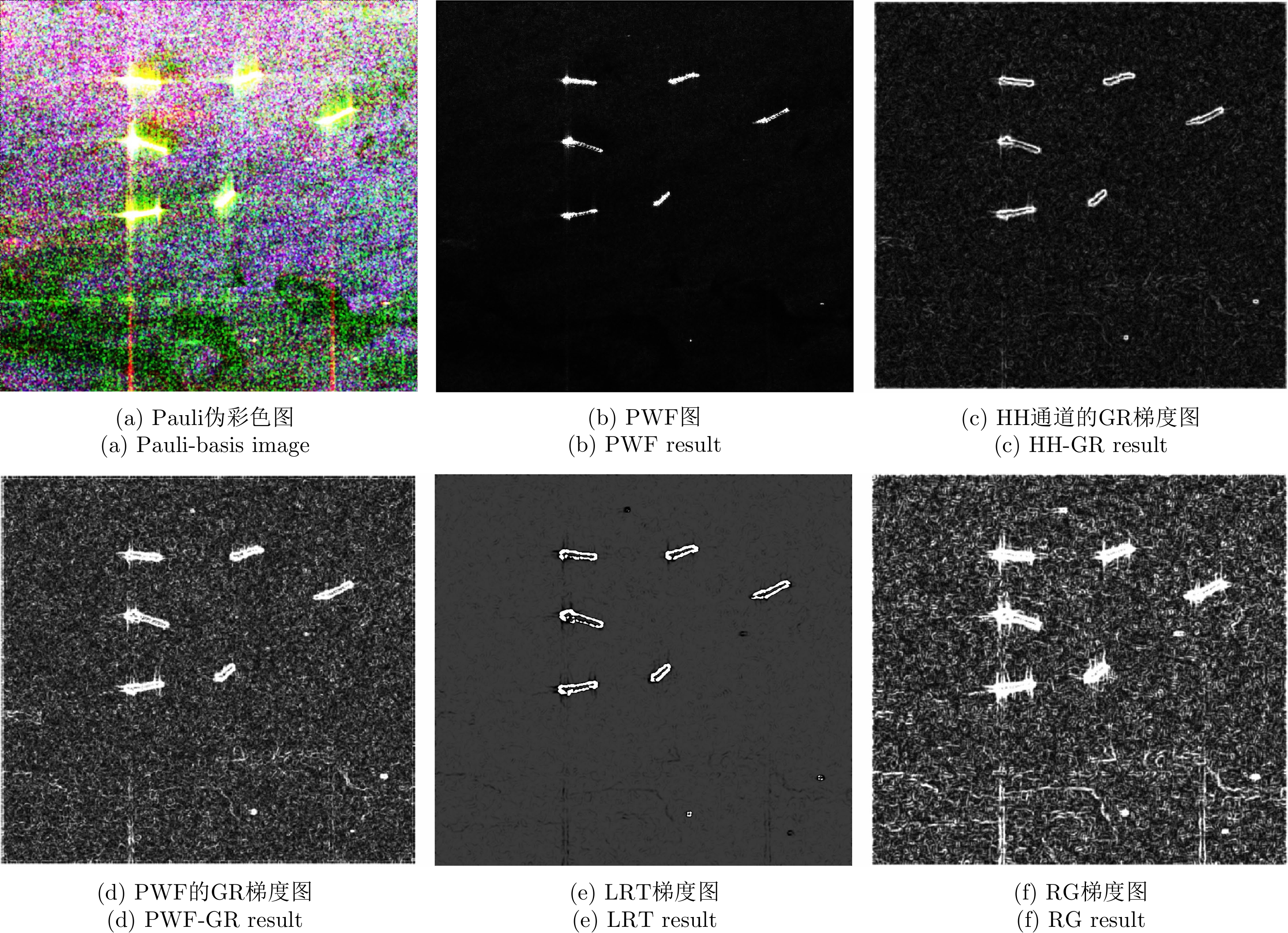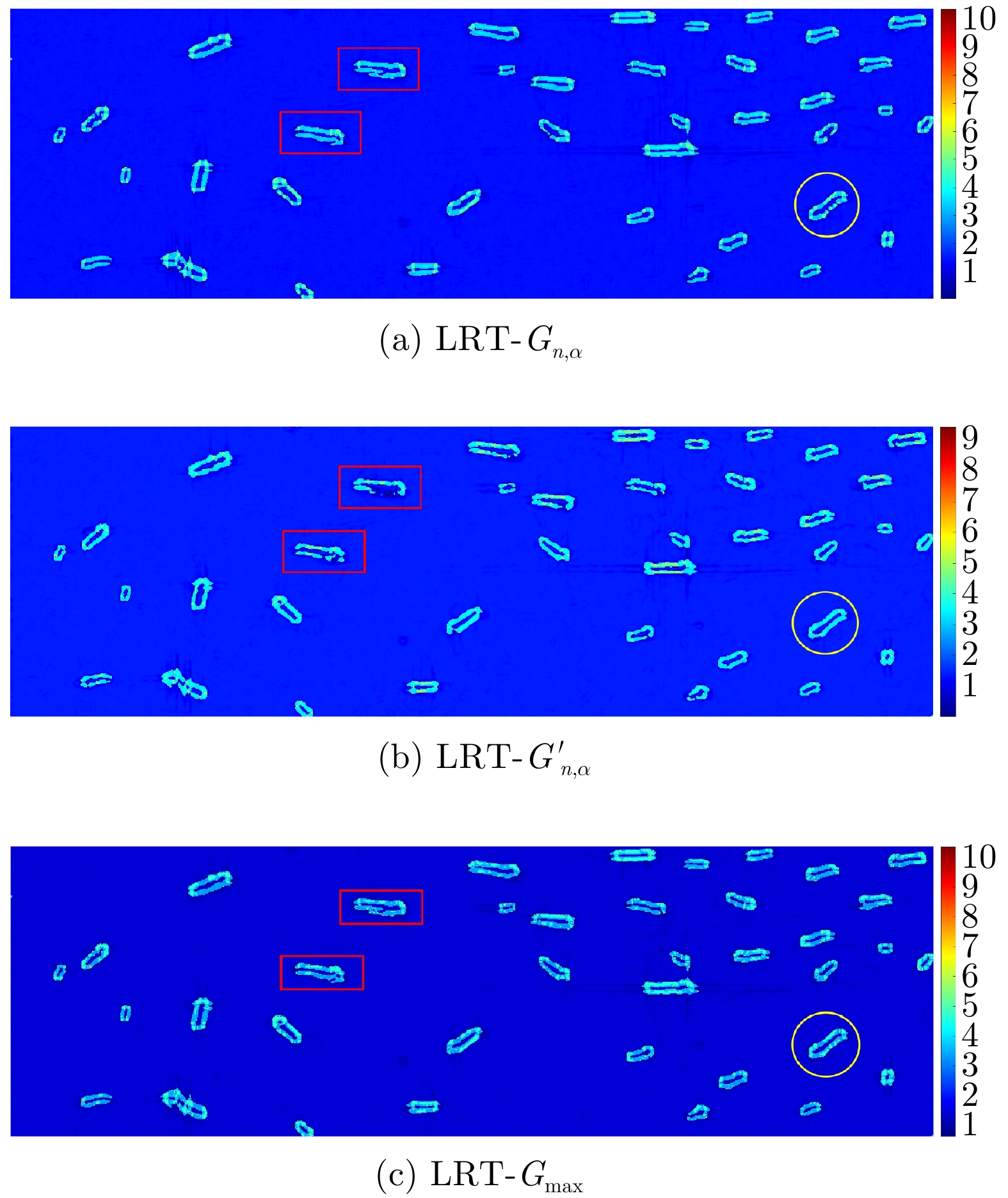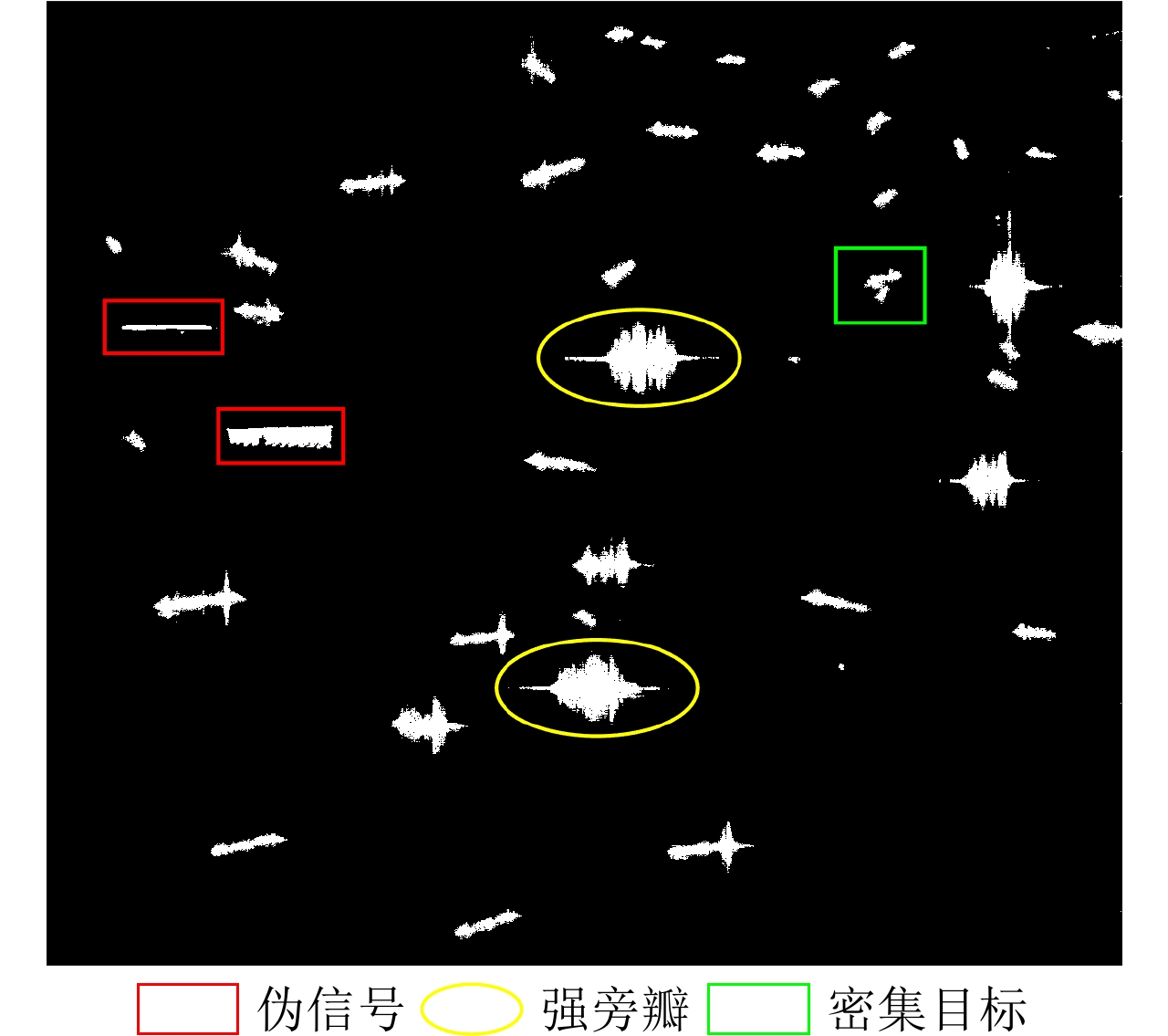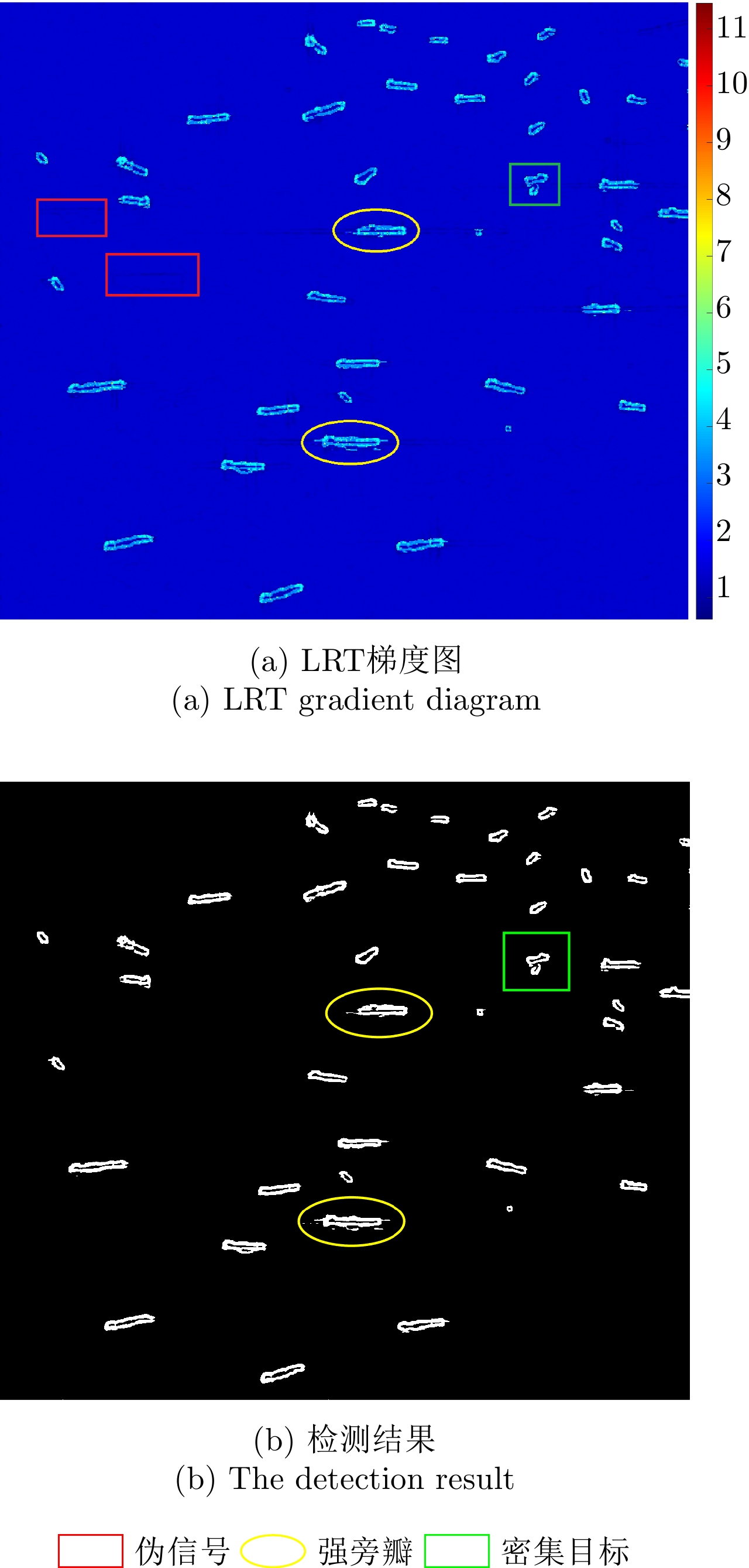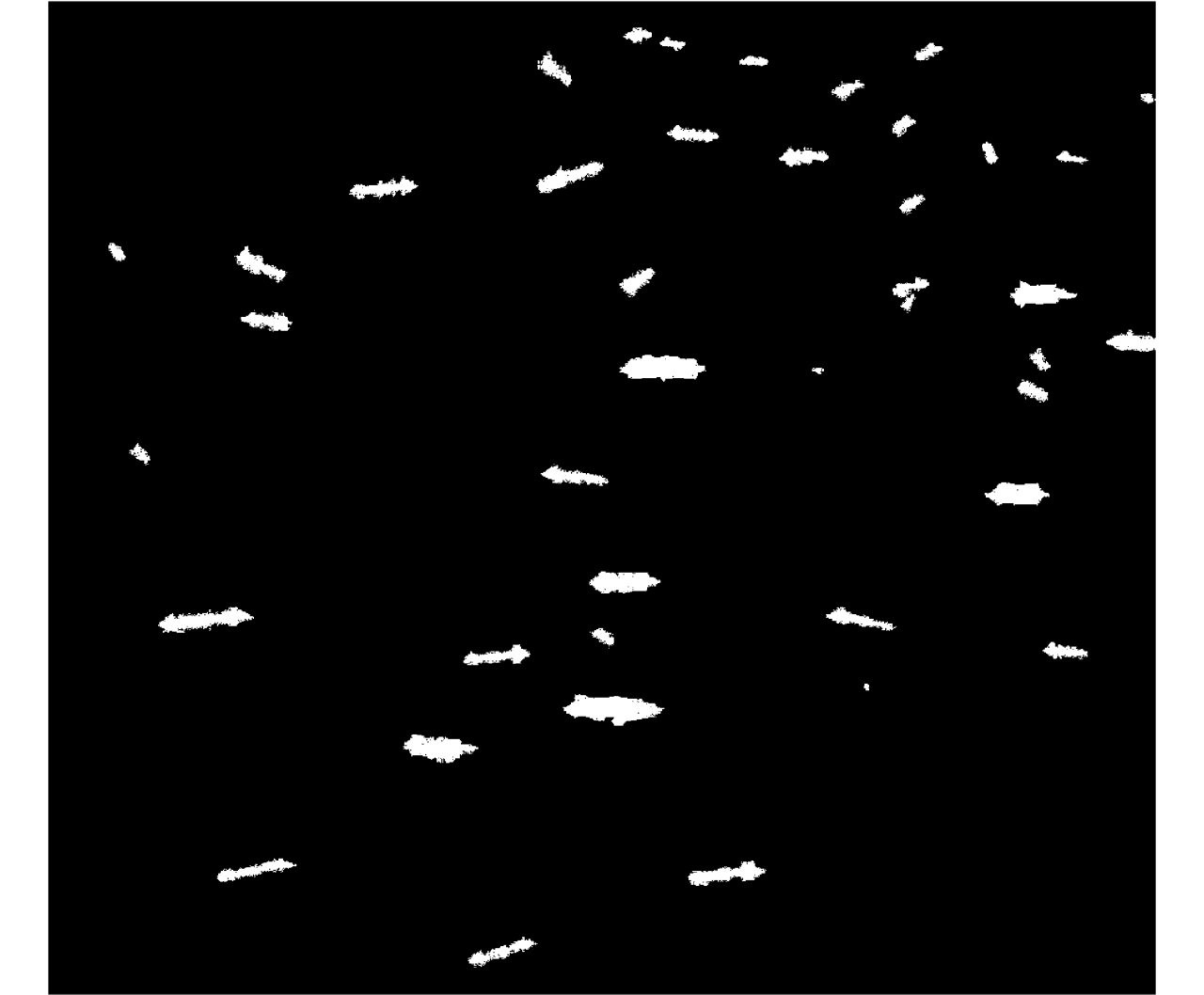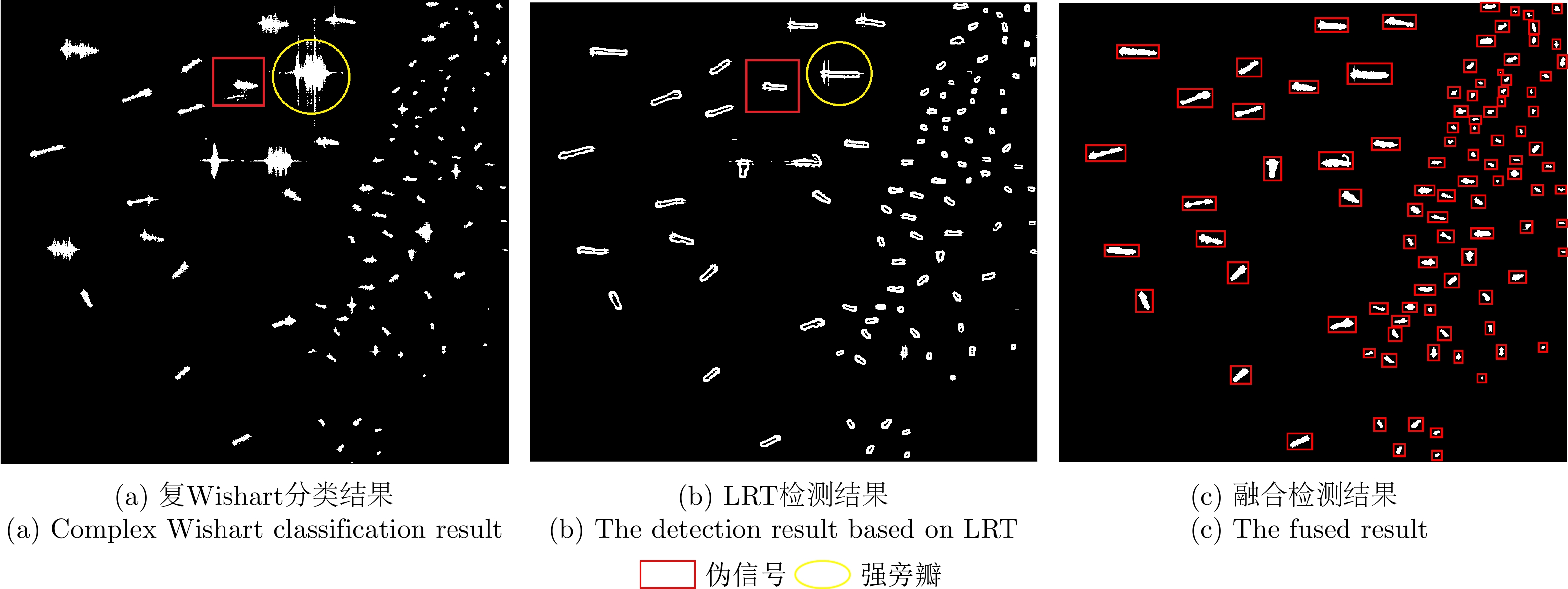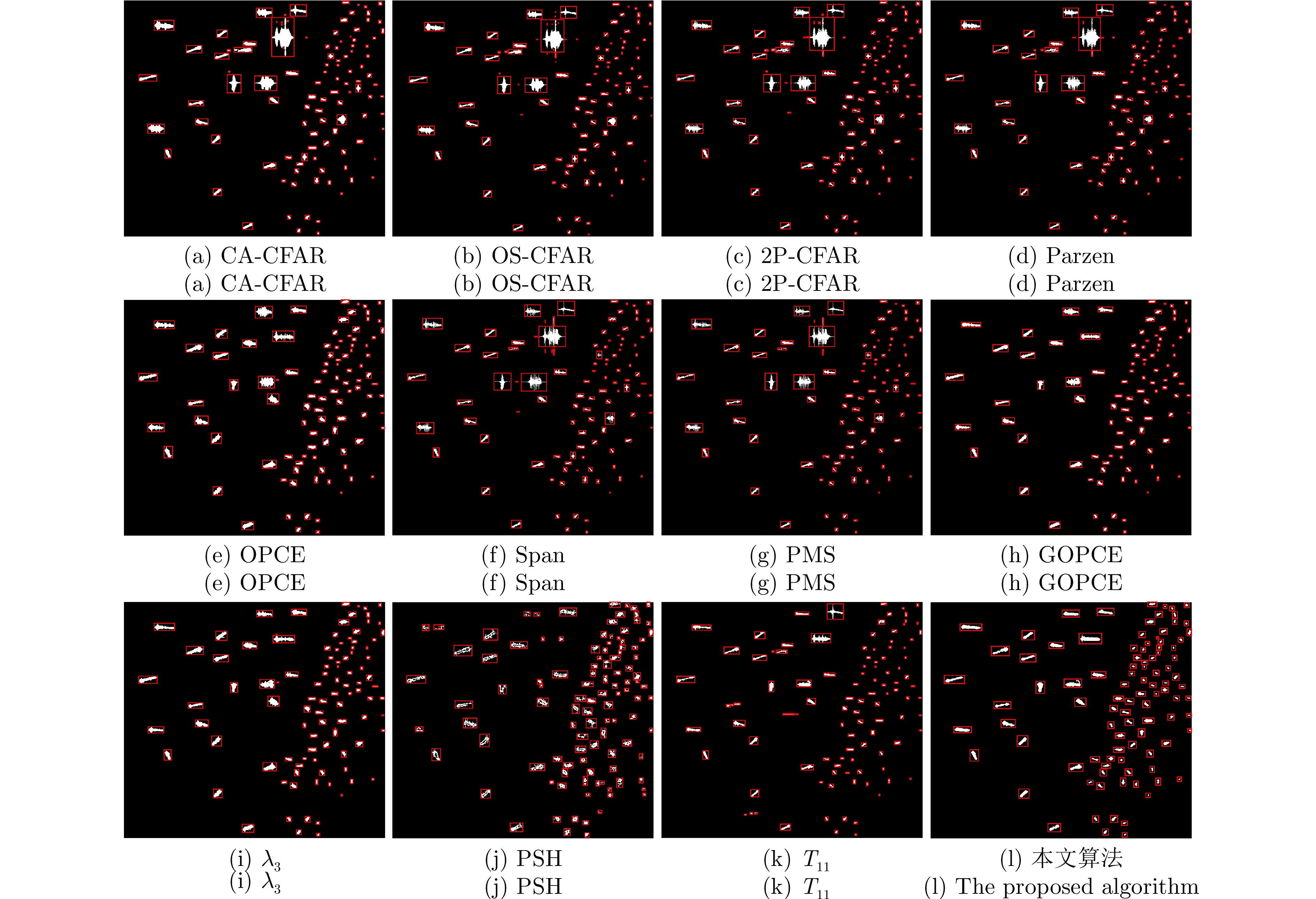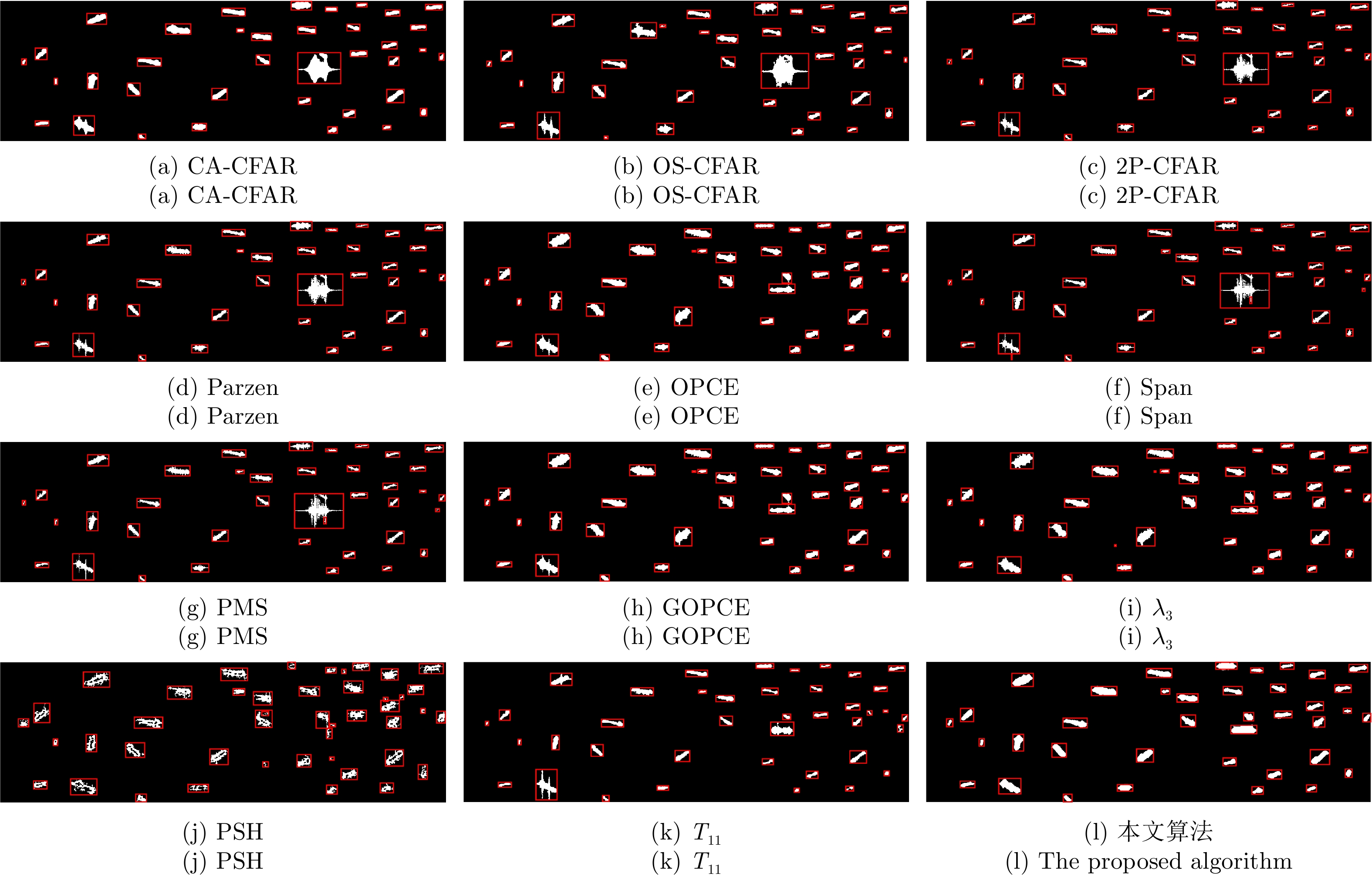| [1] |
杨汝良, 戴博伟, 李海英. 极化合成孔径雷达极化层次和系统工作方式[J]. 雷达学报, 2016, 5(2): 132–142. doi: 10.12000/JR16013. YANG Ruliang, DAI Bowei, and LI Haiying. Polarization hierarchy and system operating architecture for polarimetric synthetic aperture radar[J]. Journal of Radars, 2016, 5(2): 132–142. doi: 10.12000/JR16013. |
| [2] |
WEISS M. Analysis of some modified cell-averaging CFAR processors in multiple-target situations[J]. IEEE Transactions on Aerospace and Electronic Systems, 1982, AES-18(1): 102–114. doi: 10.1109/TAES.1982.309210. |
| [3] |
NOVAK L M, BURL M C, and IRVING W W. Optimal polarimetric processing for enhanced target detection[J]. IEEE Transactions on Aerospace and Electronic Systems, 1993, 29(1): 234–244. doi: 10.1109/7.249129. |
| [4] |
AI Jiaqiu, YANG Xuezhi, DONG Zhangyu, et al. A new two parameter CFAR ship detector in Log-Normal clutter[C]. 2017 IEEE Radar Conference, Seattle, USA, 2017: 195–199. doi: 10.1109/RADAR.2017.7944196. |
| [5] |
RITCEY J A and DU H. Order statistic CFAR detectors for speckled area targets in SAR[C]. Conference Record of the Twenty-Fifth Asilomar Conference on Signals, Systems & Computers, Pacific Grove, USA, 1991: 1082–1086. doi: 10.1109/ACSSC.1991.186613. |
| [6] |
GOLDSTEIN G B. False-alarm regulation in log-normal and Weibull clutter[J]. IEEE Transactions on Aerospace and Electronic Systems, 1973, AES-9(1): 84–92. doi: 10.1109/TAES.1973.309705. |
| [7] |
LEVANON N and SHOR M. Order statistcs CFAR for Weibull background[J]. IEE Proceedings F (Radar and Signal Processing), 1990, 137(3): 157–162. doi: 10.1049/ip-f-2.1990.0023. |
| [8] |
ANASTASSOPOULOS V and LAMPROPOULOS G A. Optimal CFAR detection in Weibull clutter[J]. IEEE Transactions on Aerospace and Electronic Systems, 1995, 31(1): 52–64. doi: 10.1109/7.366292. |
| [9] |
GUAN Jian, HE You, and PENG Yingning. CFAR detection in K-distributed clutter[C]. Fourth International Conference on Signal Processing, Beijing, China, 1998: 1513–1516. doi: 10.1109/ICOSP.1998.770911. |
| [10] |
NOVAK L M and BURL M C. Optimal speckle reduction in polarimetric SAR imagery[J]. IEEE Transactions on Aerospace and Electronic Systems, 1990, 26(2): 293–305. doi: 10.1109/7.53442. |
| [11] |
杨汝良, 戴博伟, 谈璐璐, 等. 极化微波成像[M]. 北京: 国防工业出版社, 2016.
YANG Ruliang, DAI Bowei, TAN Lulu, et al. Polarimetric Microwave Imaging[M]. Beijing: National Defense Industry Press, 2016.
|
| [12] |
CHANEY R D, BUD M C, and NOVAK L M. On the performance of polarimetric target detection algorithms[J]. IEEE Aerospace and Electronic Systems Magazine, 1990, 5(11): 10–15. doi: 10.1109/62.63157. |
| [13] |
BOERNER W M, KOSTINSKI A B, and JAMES B D. On the concept of the polarimetric matched filter in high resolution radar imaging: An alternative for speckle reduction[C]. International Geoscience and Remote Sensing Symposium, ‘Remote Sensing: Moving Toward the 21st Century’, Edinburgh, UK, 1988: 69–72. doi: 10.1109/IGARSS.1988.570053. |
| [14] |
KOSTINSKI A and BOERNER W. On the polarimetric contrast optimization[J]. IEEE Transactions on Antennas and Propagation, 1987, 35(8): 988–991. doi: 10.1109/TAP.1987.1144209. |
| [15] |
YANG Jian, DONG Guiwei, PENG Yingning, et al. Generalized optimization of polarimetric contrast enhancement[J]. IEEE Geoscience and Remote Sensing Letters, 2004, 1(3): 171–174. doi: 10.1109/LGRS.2004.830127. |
| [16] |
YIN Junjun, AN Wentao, and YANG Jian. Supervised target classification using polarimetric scattering parameters and Fisher-OPCE[J]. Journal of Tsinghua University : Science and Technolog y, 2011, 51(12): 1782–1786. doi: 10.16511/j.cnki.qhdxxb.2011.12.007. |
| [17] |
XI Yuyang, ZHANG Xi, LAI Quan, et al. A new PolSAR ship detection metric fused by polarimetric similarity and the third eigenvalue of the coherency matrix[C]. 2016 IEEE International Geoscience and Remote Sensing Symposium, Beijing, China, 2016: 112–115. doi: 10.1109/IGARSS.2016.7729019. |
| [18] |
ZHANG Tao, YANG Zhen, and XIONG Huilin. PolSAR ship detection based on the polarimetric covariance difference matrix[J]. IEEE Journal of Selected Topics in Applied Earth Observations and Remote Sensing, 2017, 10(7): 3348–3359. doi: 10.1109/JSTARS.2017.2671904. |
| [19] |
SHI Hao, ZHANG Qingjun, BIAN Mingming, et al. A novel ship detection method based on gradient and integral feature for single-polarization synthetic aperture radar imagery[J]. Sensors, 2018, 18(2): 563. doi: 10.3390/s18020 563.
|
| [20] |
DELLINGER F, DELON J, GOUSSEAU Y, et al. SAR-SIFT: A SIFT-like algorithm for SAR images[J]. IEEE Transactions on Geoscience and Remote Sensing, 2015, 53(1): 453–466. doi: 10.1109/TGRS.2014.2323552. |
| [21] |
SONG Shengli, XU Bin, and YANG Jian. SAR target recognition via supervised discriminative dictionary learning and sparse representation of the SAR-HOG feature[J]. Remote Sensing, 2016, 8(8): 683. doi: 10.3390/rs8080683. |
| [22] |
LIN Huiping, SONG Shengli, and YANG Jian. Ship classification based on MSHOG feature and task-driven dictionary learning with structured incoherent constraints in SAR images[J]. Remote Sensing, 2018, 10(2): 190. doi: 10.3390/rs10020190. |
| [23] |
GAO Gui. A parzen-window-kernel-based CFAR algorithm for ship detection in SAR images[J]. IEEE Geoscience and Remote Sensing Letters, 2011, 8(3): 557–561. doi: 10.1109/LGRS.2010.2090492. |
| [24] |
张晓玲, 张天文, 师君, 等. 基于深度分离卷积神经网络的高速高精度SAR舰船检测[J]. 雷达学报, 2019, 8(6): 841–851. doi: 10.12000/JR19111. ZHANG Xiaoling, ZHANG Tianwen, SHI Jun, et al. High-speed and high-accurate SAR ship detection based on a depthwise separable convolution neural network[J]. Journal of Radars, 2019, 8(6): 841–851. doi: 10.12000/JR19111. |
| [25] |
FAN Weiwei, ZHOU Feng, BAI Xueru, et al. Ship detection using deep convolutional neural networks for PolSAR images[J]. Remote Sensing, 2019, 11(23): 2862. doi: 10.3390/rs11232862. |
| [26] |
AN Quanzhi, PAN Zongxu, and YOU Hongjian. Ship detection in Gaofen-3 SAR images based on sea clutter distribution analysis and deep convolutional neural network[J]. Sensors, 2018, 18(2): 334. doi: 10.3390/s18020334. |
| [27] |
ZHANG Zhimian, WANG Haipeng, XU Feng, et al. Complex-valued convolutional neural network and its application in polarimetric SAR image classification[J]. IEEE Transactions on Geoscience and Remote Sensing, 2017, 55(12): 7177–7188. doi: 10.1109/TGRS.2017.2743222. |
| [28] |
RIGNOT E J M and VAN ZYL J J. Change detection techniques for ERS-1 SAR data[J]. IEEE Transactions on Geoscience and Remote Sensing, 1993, 31(4): 896–906. doi: 10.1109/36.239913. |
| [29] |
MA Xiaoshuang, SHEN Huanfeng, ZHANG Liangpei, et al. Adaptive anisotropic diffusion method for polarimetric SAR speckle filtering[J]. IEEE Journal of Selected Topics in Applied Earth Observations and Remote Sensing, 2015, 8(3): 1041–1050. doi: 10.1109/JSTARS.2014.2328332. |
| [30] |
NIELSEN A A, CONRADSEN K, and SKRIVER H. Change detection in full and dual polarization, single-and multifrequency SAR data[J]. IEEE Journal of Selected Topics in Applied Earth Observations and Remote Sensing, 2015, 8(8): 4041–4048. doi: 10.1109/JSTARS.2015.2416434. |
| [31] |
LEE J S, GRUNES M R, AINSWORTH T L, et al. Unsupervised classification using polarimetric decomposition and the complex Wishart classifier[J]. IEEE Transactions on Geoscience and Remote Sensing, 1999, 37(5): 2249–2258. doi: 10.1109/36.789621. |
| [32] |
ZHANG Jiafeng, ZHU Bo, ZHANG Peng, et al. Polarimetric SAR imagery target CFAR detection analytical algorithm with Wishart distribution[J]. Acta Electronica Sinica, 2018, 46(2): 433–439. doi: 10.3969/j.issn.0372-2112.2018.02.024. |
| [33] |
WANG Hongmiao, ZENG Liang, ZHANG Tao, et al. A PolSAR despeckling method based on Wishart gradient and anisotropic diffusion[J]. Electronics Letters, 2021, 57(3): 126–128. doi: 10.1049/ell2.12086. |




 Submit Manuscript
Submit Manuscript Peer Review
Peer Review Editor Work
Editor Work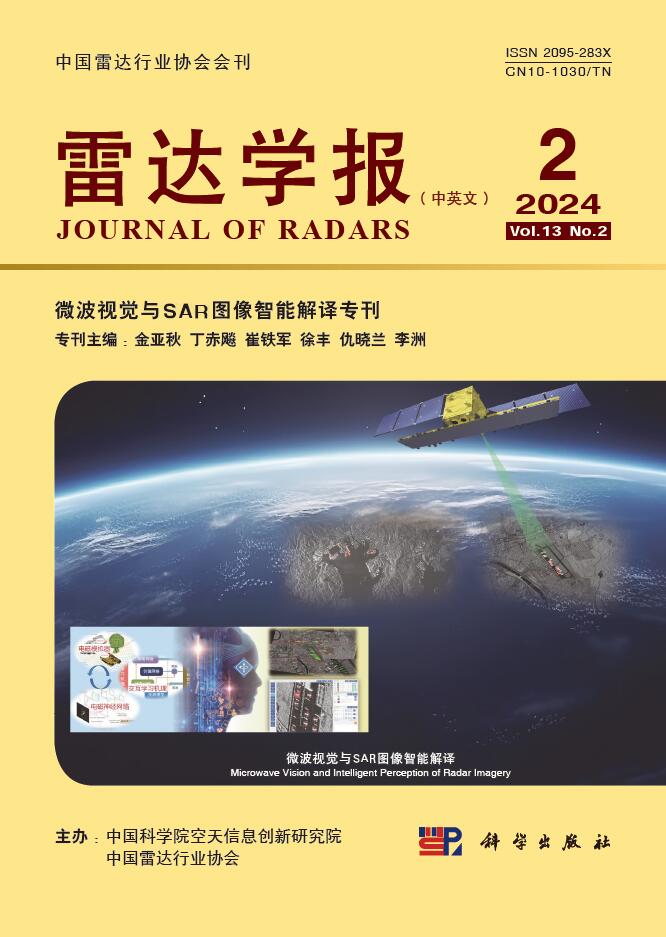

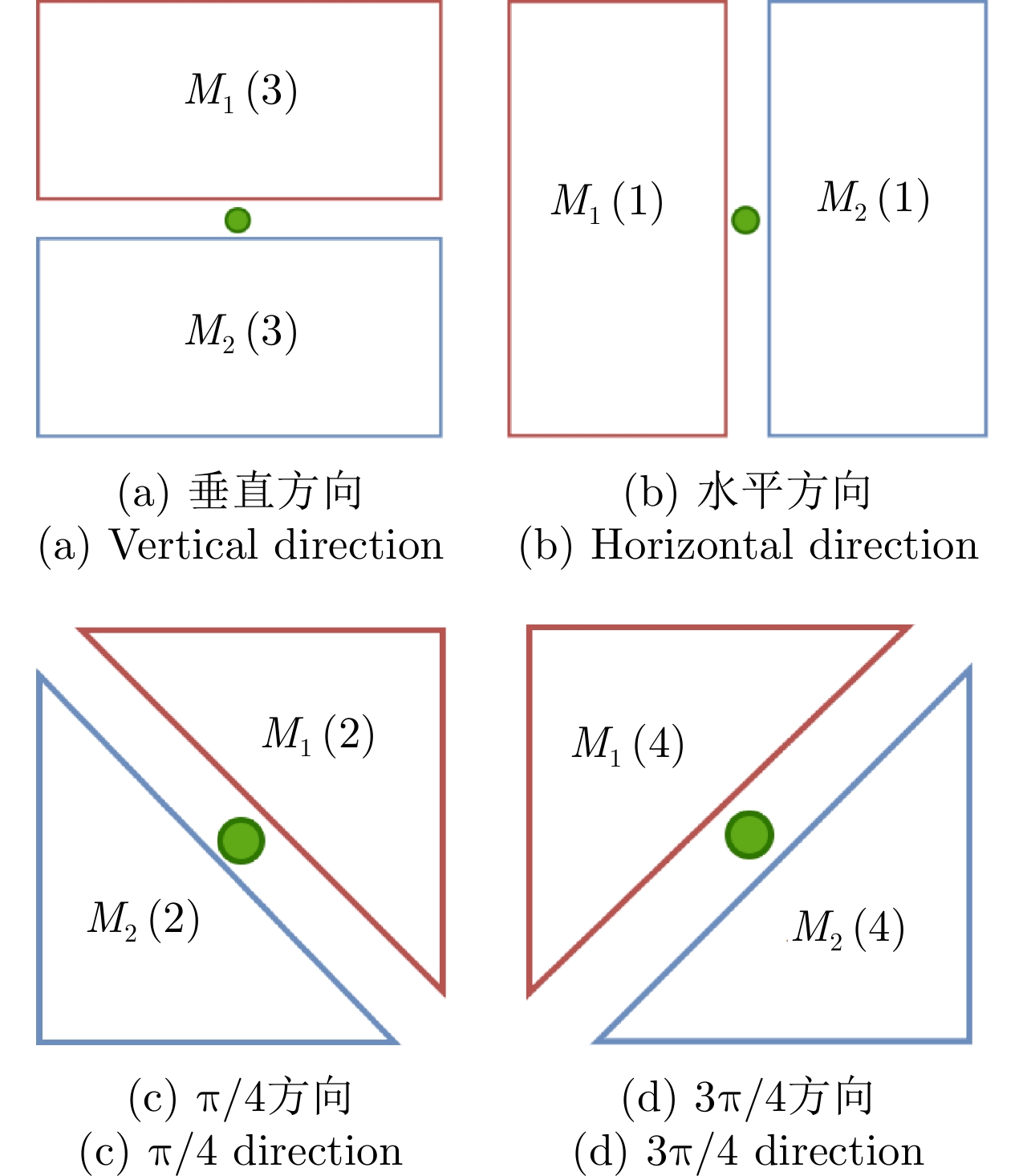



 DownLoad:
DownLoad:
